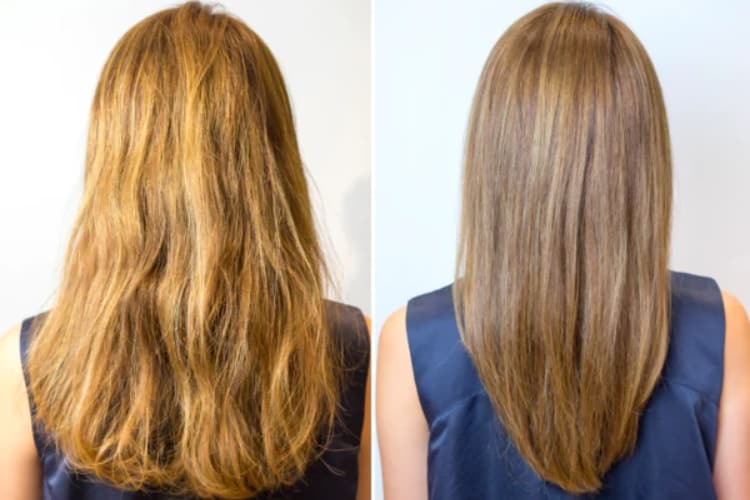INGREDIENTS
Although both products work to link broken hair bonds, the ingredients that do the heavy lifting are very different.
Epres
Epres only contains 4 ingredients (all biodegradable and vegan) and is a waterless formula.
This minimalistic formulation helps preserve the strength of the formula and ensures greater absorption of the key ingredients that help repair broken bonds. Epres also does not contain any acids, which Dr Pressly says can lower the pH level of your hair and reduce the effectiveness of subsequent hair treatments.
“If you’re bleaching, acids can slow the amount of lightening, with colouring you’re slowing the colour deposit which increases the amount of time and product you may need,” Dr. Pressly says.
Epres Ingredients: diethylhexyl maleate, oleyl alcohol, alcohol denat, and stearamidopropyl dimethylamine.
Olaplex
In contrast to Epres, Olaplex contains a more extensive ingredient list, including nourishing oils, botanical extracts, and vitamins.
It contains ingredients that not only repair broken bonds but also hydrate and soothe the hair, such as jojoba oil, aloe vera, and ascorbic acid (water-soluble vitamin C).
The formula is not water- or acid-free, but it contains a very high concentration of the active bond-repair ingredient “Bis-Aminopropyl Diglycol Dimaleate”, so the additional ingredients work to enhance and complement the hero ingredient instead of diluting its potency.
Olaplex ingredients: Water, Bis-Aminopropyl Diglycol Dimaleate, Propylene Glycol, Cetearyl Alcohol, Behentrimonium Methosulfate, Cetyl Alcohol, Phenoxyethanol, Glycerin, Hydroxyethyl Ethylcellulose, Stearamidopropyl Dimethylamine, Quaternium-91.
Sodium Benzoate, Cetrimonium Methosulfate, Cetrimonium Chloride, Fragrance, Polyquaternium-37, Tetrasodium Edta, Butylphenyl Methylpropional, Etidronic Acid, Ascorbic Acid, Phytantriol, Tocopheryl Acetate, Aloe Barbadensis Leaf Juice.
Panthenol, Simmondsia Chinensis (Jojoba) Seed Oil, Citric Acid, Potassium Sorbate.















